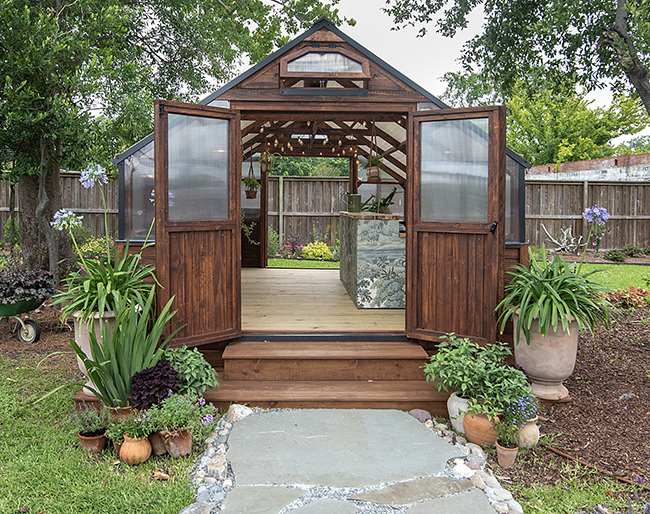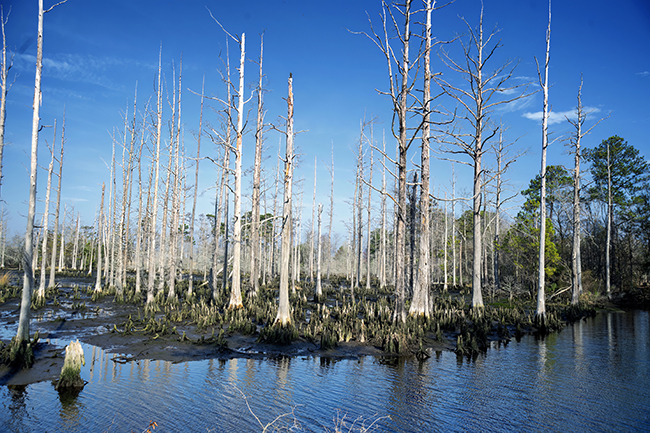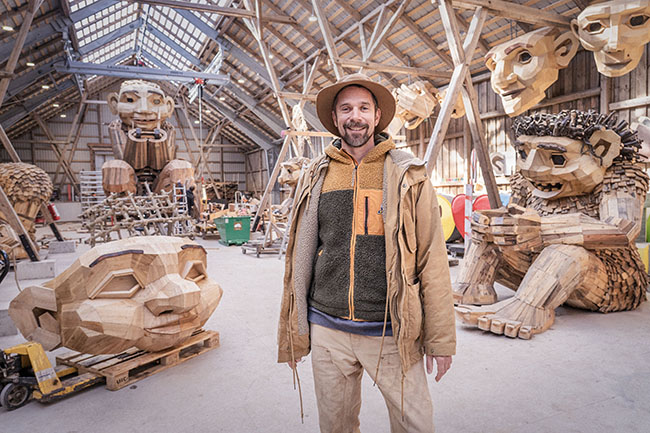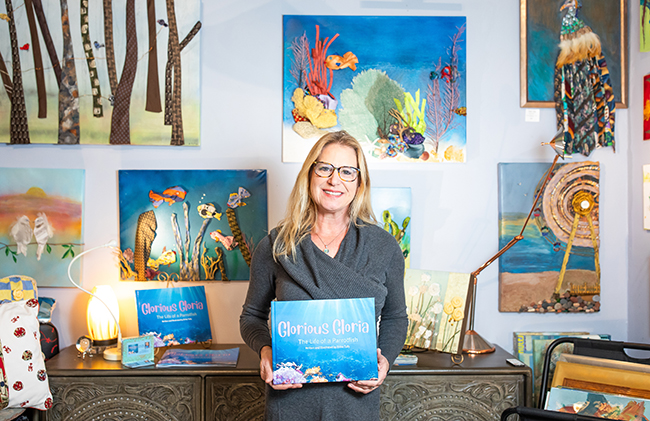Sea Turtle Nesting Season is Here
01 Jul 2025
Each summer, conservationists urge the public to reduce artificial light and get involved to help protect this endangered species
By Jade Neptune
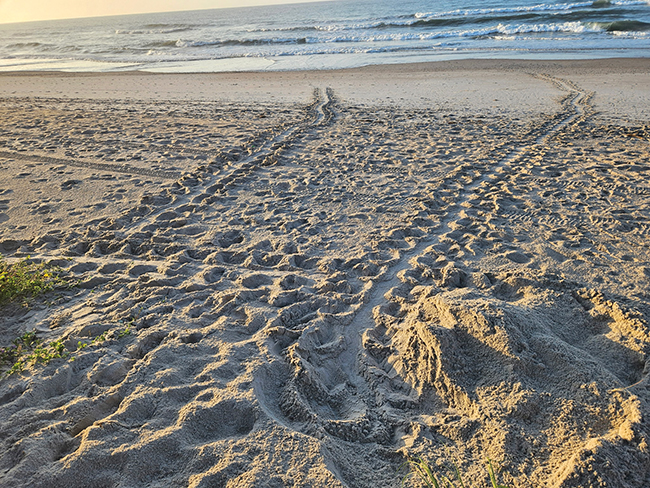
In the early morning hours of dawn, when the moon is still high and the brightest light in the sky, something magical happens on the Carolina coast. Each summer, a grandmother, a mother and a daughter emerge from the depths of the sparkling sea and make their way onto the sand. They crawl up the bank of the beach on their slippery bellies and burrow into the cold, wet sand after carefully considering the spot. When they determine it’s safe, they lay their eggs before returning to the water.
This is a family ritual for these sea turtles and many like them—a generational celebration that continues each season.
“We’ve got a turtle who only nests on Topsail Island,” says Terry Meyer, director of the nesting program at the Karen Beasley Sea Turtle Rescue and Rehabilitation Center. “We’ve seen her return now eight seasons over 15 years. Every nest she puts down is on Topsail. She averages five nests a season, and I think I’ve counted 5,000 surviving hatchlings just from that one turtle.”
It’s not just magical—it’s a family affair.
May 1 marked the beginning of nesting season on the Carolina coast. Running through Aug. 31, the season brings more than 1,500 nests each summer to Wilmington-area beaches. With the support of local volunteers and staff like Meyer, conservationists are calling on the public to help protect this vulnerable population.
“If you take away the ghost crabs, the coyotes and sharks, every other problem they have is human-being centered,” Meyer says. “It’s us. We’re creating the extinction of sea turtles, and only we can save the sea turtle.”
According to the World Wildlife Fund, six out of seven species of sea turtles are considered threatened or endangered—largely due to human activity. One of the most significant threats is something easily managed by the public: white lights.
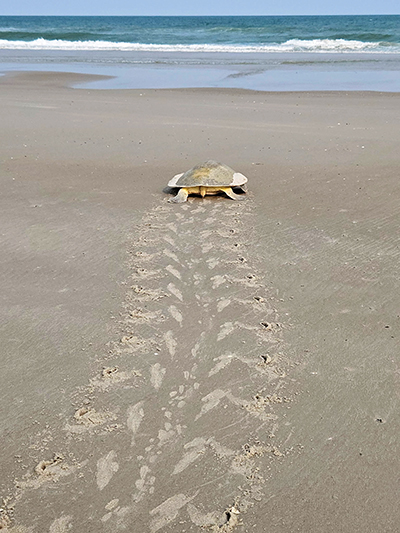
“The turtles orient to the brightest light on the horizon, which on an uninhabited beach would be the starlight, the moonlight or the phosphorescence on the waves—just the light that’s over the water,” Meyer says.
When this natural light is challenged by artificial sources, it creates deadly confusion. Bright deck lights, streetlights or even flashlights can disorient turtles, causing them to head inland and perish before reaching the sea.
“Without conservation projects up and down the coast and around the world, we would not have successful sea turtle nesting seasons—and we wouldn’t have sea turtle nesting seasons anymore,” Meyer says. “At least if it wasn’t for the people who wanted to try to conserve them.”
How can the public help? The answer is simple: switch out white lights for amber or red bulbs. According to the Beasley Center’s research, the amber and red wavelengths don’t interfere with sea turtles.
“This is one of the greatest conservation steps they can take,” Meyer says. “By changing out their lights, they’ve already saved a hundred sea turtles.”
One of the biggest challenges remains streetlights near the shoreline, but electrical companies have stepped in. When volunteers and hospital staff see a streetlight shining on a nest, they contact the local power company using the number listed on the pole. The company visits the site and turns off the light until the nest hatches.
Behind all the science and knowledge required to conserve sea turtles is an immense amount of passion.
“As beach people, we all love them,” Meyer says. “But I haven’t loved turtles all my life. I didn’t even know sea turtles existed as an animal in the world until I moved out here in 1993.”
After learning about them, Meyer quickly fell in love—with the turtles and the coastal community working to save them.
She started as a volunteer patrolling the beach for nests and turtle tracks. She became director of the nesting program just four years ago.
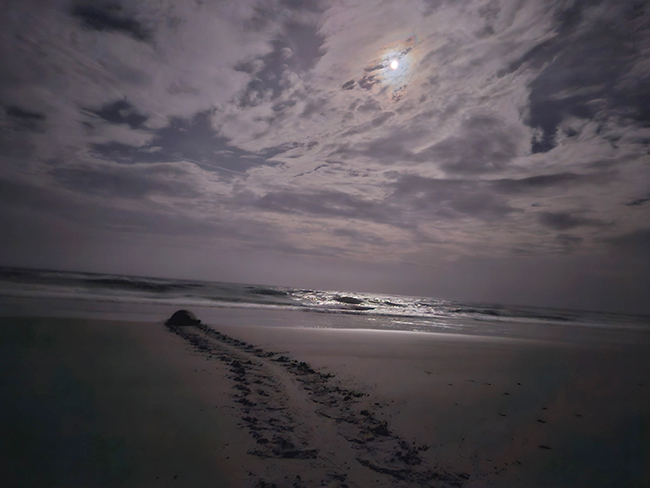
“What I did not know before I joined this organization was how beautiful the night beach was—and how that would be my favorite time of day to be on the beach, after dark,” she says. “It’s just a really beautiful, peaceful place to be.”
For Meyer, it’s about purpose—and the deep kinship she feels with the turtles she has come to understand so intimately.
“I was able to understand how individual they are,” she says. “They’re as individual as any cat or dog or other pet. They’re completely different from each other. They have personalities. They have likes and dislikes. But they’re up against the last 60 years—the changing tide of people.”
Turtles return to the same beach every year to nest—the same one where they hatched more than 25 years before. Part of the Beasley Center’s mission is to deepen scientific understanding of this behavior.
“We collect one egg from each nest,” Meyer says. “We preserve the eggshell in alcohol for a three-state study with South Carolina and Georgia. From every beach in those three states, samples go to the lab at the University of Georgia, where they’re able to determine the mother’s DNA.”
The research helps track individual turtles, noting where else they’ve nested, how successful their nests were and when they’re likely to return. It pulls back the curtain on nesting season, turning magic into data that can help ensure turtles return for generations to come.
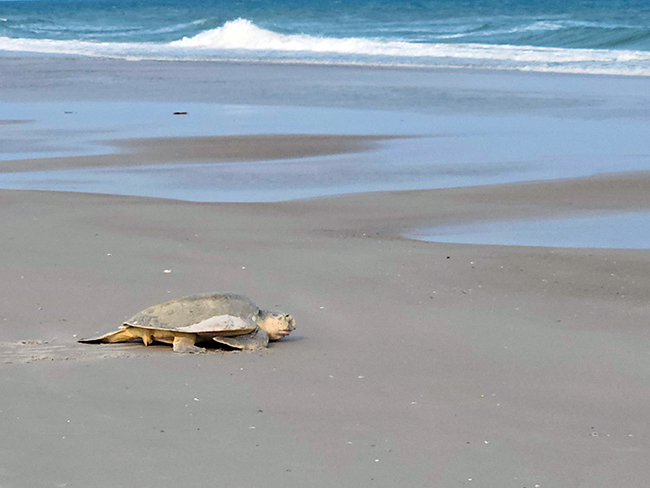
The mothers will come and go. Volunteers will march the beaches at dusk and dawn, watching for track marks and signs of life. Rare species like loggerheads, green sea turtles and Kemp’s ridleys will continue to find their way home.
Meyer sees herself in them—and encourages others to feel the same connection.
“I always tell everybody, when I come back in my next life,” she says, “I’m either coming back as a sea turtle—or I’ve already been one.”
To assist with sea turtle conservation in Wilmington, contact the Wrightsville Beach Sea Turtle Project at 833-4-TURTLE. To volunteer with the Karen Beasley Sea Turtle Rescue and Rehabilitation Center in Surf City, visit seaturtlehospital.org.

